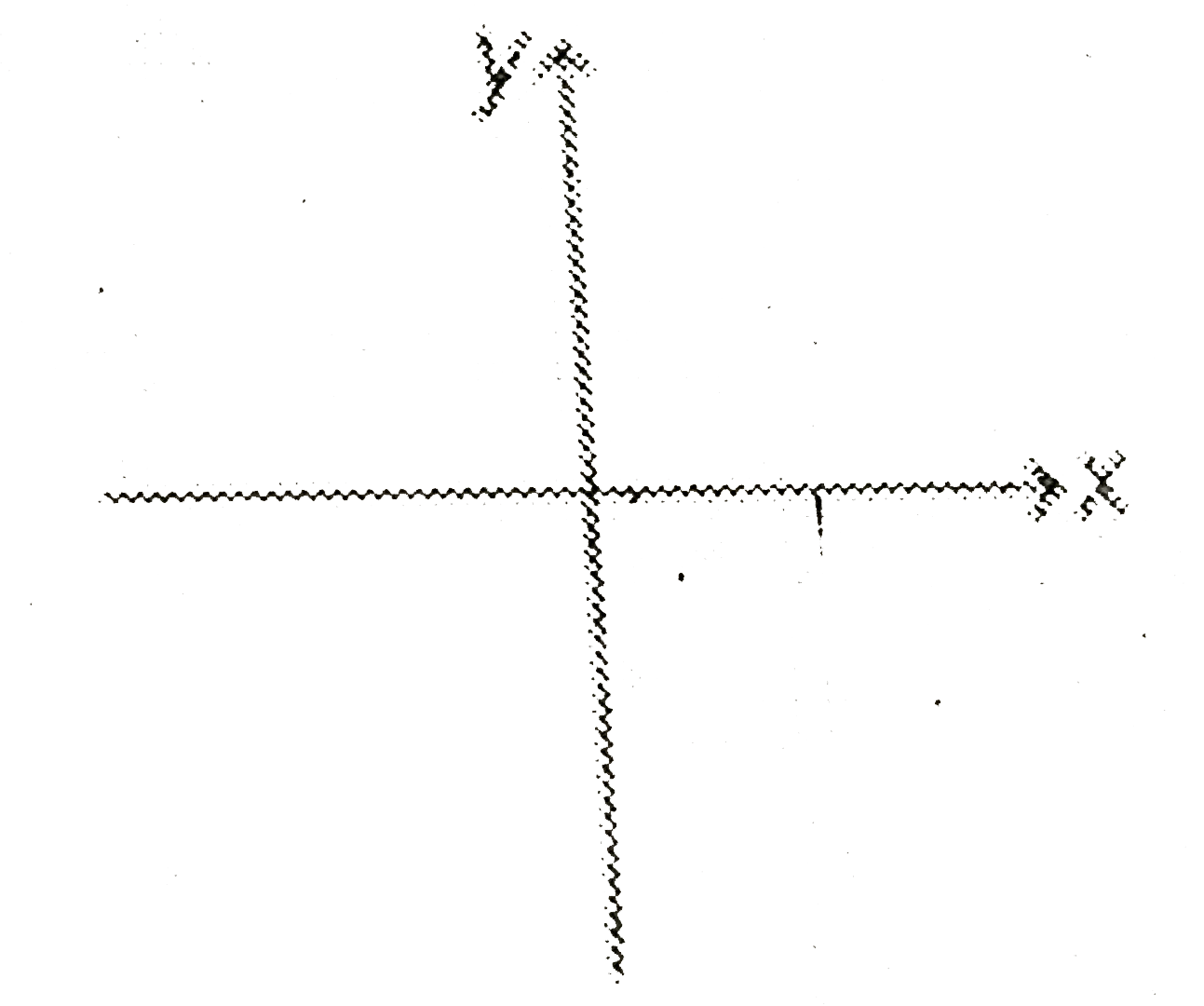For a particle moving in the x-y plane, the x and y coordinates are changing as x=a sin ωt and y=a(1−cosωt), where 'a' and ω constants. Then, what can be inferred for the trajectory of the particle ?
The trajectory is parabolic.
The trajectory is elliptical
The trajectory is such that distance moved by the particle is directly proportional to time.
The trajectory of the particle is equidistant from the origin at every instant of time.
The correct Answer is:C
To solve the problem, we need to analyze the given equations for the x and y coordinates of the particle:
1. Given Equations:
x=asin(ωt)
y=a(1−cos(ωt))
2. Expressing Trigonometric Functions:
We can use the Pythagorean identity for sine and cosine. We know that:
sin2(θ)+cos2(θ)=1
3. Rearranging the y Equation:
From the equation for y, we can express cos(ωt) in terms of y:
y=a(1−cos(ωt))⟹cos(ωt)=1−ya
4. Substituting into the Sine Identity:
Now, we can substitute cos(ωt) into the sine identity:
sin2(ωt)=1−cos2(ωt)
sin2(ωt)=1−(1−ya)2
5. Expanding the Cosine Term:
Expanding the squared term:
sin2(ωt)=1−(1−2ya+y2a2)
sin2(ωt)=2ya−y2a2
6. Substituting for x:
Now substitute x=asin(ωt):
sin2(ωt)=x2a2
7. Combining the Two Equations:
Now we can set the two expressions for sin2(ωt) equal to each other:
x2a2=2ya−y2a2
8. Multiplying through by a2:
To eliminate the fractions, multiply through by a2:
x2=2ay−y2
9. Rearranging the Equation:
Rearranging gives us:
x2+y2−2ay=0
10. Completing the Square:
Completing the square for the y terms:
x2+(y−a)2=a2
11. Identifying the Shape:
This is the equation of a circle with:
- Center at (0,a)
- Radius a
Conclusion:
The trajectory of the particle is a circle centered at (0,a) with radius a.
x=asin(ωt)
y=a(1−cos(ωt))
We can use the Pythagorean identity for sine and cosine. We know that:
sin2(θ)+cos2(θ)=1
From the equation for y, we can express cos(ωt) in terms of y:
y=a(1−cos(ωt))⟹cos(ωt)=1−ya
Now, we can substitute cos(ωt) into the sine identity:
sin2(ωt)=1−cos2(ωt)
sin2(ωt)=1−(1−ya)2
Expanding the squared term:
sin2(ωt)=1−(1−2ya+y2a2)
sin2(ωt)=2ya−y2a2
Now substitute x=asin(ωt):
sin2(ωt)=x2a2
Now we can set the two expressions for sin2(ωt) equal to each other:
x2a2=2ya−y2a2
To eliminate the fractions, multiply through by a2:
x2=2ay−y2
Rearranging gives us:
x2+y2−2ay=0
Completing the square for the y terms:
x2+(y−a)2=a2
This is the equation of a circle with:
- Center at (0,a)
- Radius a
The trajectory of the particle is a circle centered at (0,a) with radius a.
Similar Questions
A particle of mass 'm' is moving in the x−y plane such that its x and y coordinate vary according to the law x=asinωt and y=acosωt where 'a' and 'ω' are positive constants and 't' is time. Find
(a) equation of the path. Name the trajectory (path)
(b) whether the particle moves in clockwise or anticlockwise direction
magnitude of the force on the particle at any time t.
View SolutionA particle of mass 'm' is moving in the x-y plane such that its x and y coordinate vary according to the law x= a sin ωt and y= a cos ωt where 'a' and 'omega' are positive constants and 't' is time. Find
(a) equation of the path. Name the trajectory (path).
(b) whether the particle moves in clockwise or anticlockwise direction
(c) magnitude of the force on the particle at any time t.
View SolutionA point moves in the plane xy according to the law x=asinωt, y=a(1−cosωt), where a and ω are positive constants. Find:
(a) the distance s traversed by the point during the time τ,
View SolutionA particule moves in x - y plane acording to rule x = a sin ωt and y = a cos ωt. The particle follows
View SolutionA particle is moving in x-y plane with its x and y co-ordinates varying with time as, x=2tandy=10t−16t2. Find trajectory of the particle.
View SolutionA particle moves in xy plane accordin to the law x=asinwt and y=a(1−coswt) where a and w are costant . The particle traces.
View SolutionA xandy co-ordinates of a particle are x=Asin(ωt)andy=Asin(ωt+π/2). Then, the motion of the particle is

View SolutionA particle moves in the x-y plane. It x and y coordinates vary with time t according to equations x=t2+2t and y=2t. Possible shape of path followed by the particle is
View SolutionA particle moves in a plane such that its coordinates changes with time as x=at and y=bt, where a and b are constants. Find the position vector of the particle and its direction at any time t.
View SolutionA particle moves in the XY-plane according to the law x=kt,y=kt(1−αt), where k and α are positive constants and t is time. The trajectory of the particle is
View Solution
